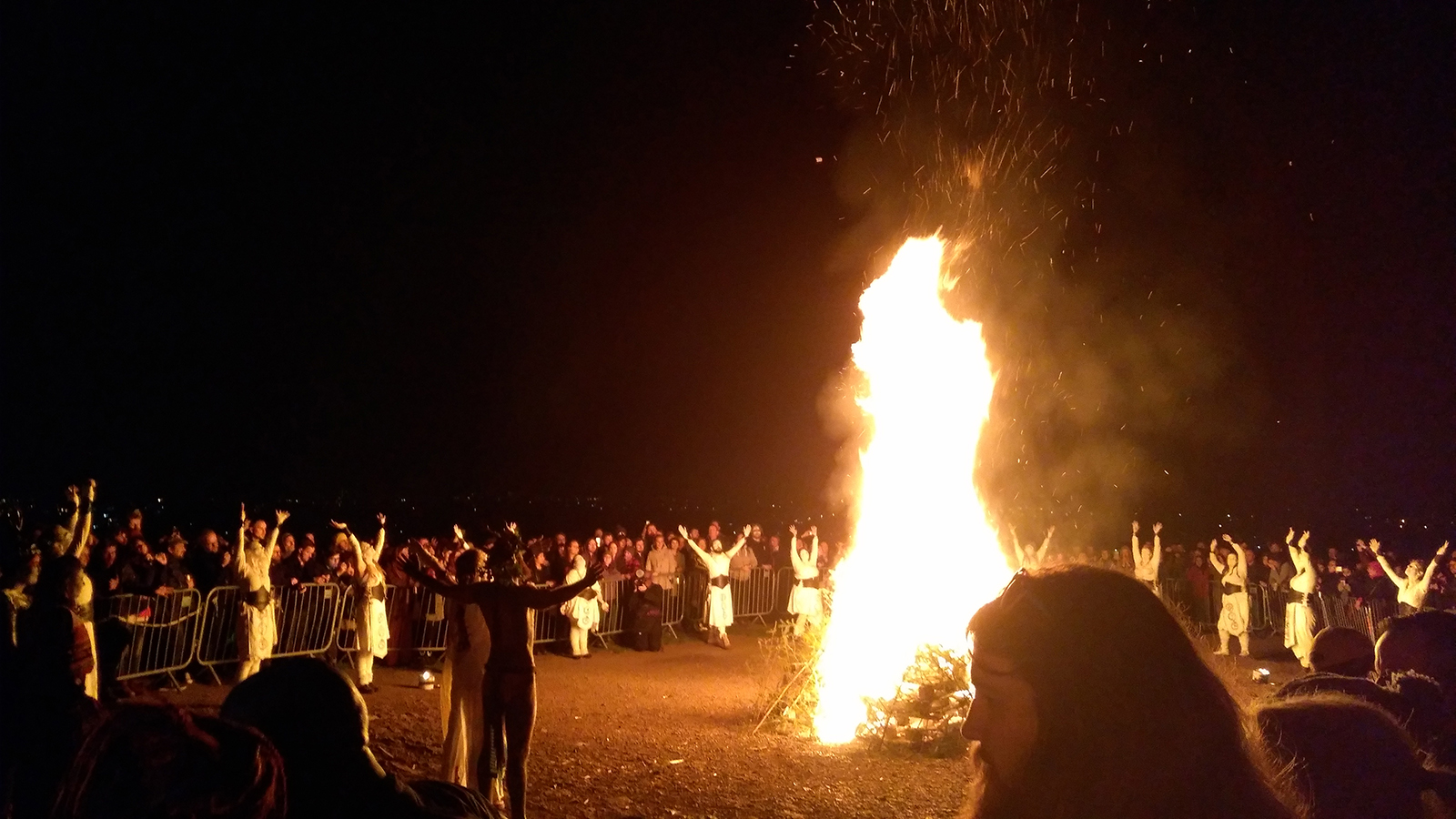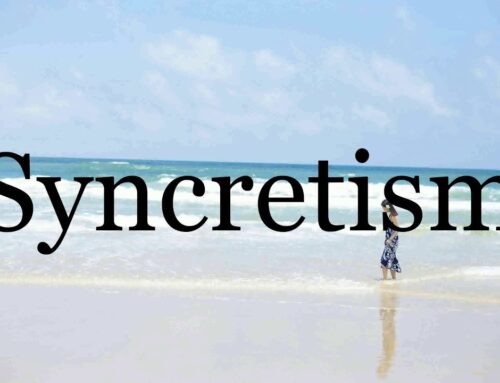Last of the last days…
For those needing a sign…
Dancers surround the bonfire at the Beltane Fire Festival 2019, at Calton Hill in Edinburgh, Scotland, on May 1, 2019. Photo by Nyri0/Wikipedia/Creative Commons© Provided by Religion News Service.
Paganism, witchcraft, and Satanism are the fastest-growing religions on earth. Paganism, rebranded as the New Age Movement permeates every aspect of human life on earth, Now in every Western government as in Eastern governments, as well as having saturated to the point of not even being conscious of the impact and influence of paganism in government, schools, corporations, news, weather, churches and every institution of man.
Do not be deceived.
From feminism to environmentalism to every bleeding pleading word proclaiming love, compassion, tolerance, and inclusion — to save the earth, to remove the patriarchy and replace it with the goddess matriarchy — the pagan “mother earth.”
Ever heard anyone say “mother earth? ”
They are professing a pagan belief. Perhaps unwittingly but nonetheless this does not excuse them. For the truth is laid out plain for any and all to find and know.
Paganism is growing at a rate unheralded in world history. A great turning from God to false gods, to becoming deluded that individuals are their own gods not in need of God! Not in need ot a Saviour! Not in need of the truth when wandering wallowing awash in darkness and delusion lapping up the lies fed to them by Satan, for their errant beliefs have their origin nowhere other or else than from the father of lies to draw people away from God, Christ, the Holy Spirit, the Word of God — the Truth and the only Way to Life.
The Lord Jesus Christ.
Do not permit any mingling, not so much as a morsel or drop to mingle within the clear life-giving waters and bread of life!
Ken Pullen, A CROOKED PATH, Wednesday, May 3rd, 2023
May Day’s pagan roots are alive and well in Beltane
Monday, May 01, 2023
Story by Religion News Service
Reprinted from Religion News Service
(RNS) — “Love, whose month is ever May,” Shakespeare wrote in the comedy “Love’s Labour’s Lost.” Centuries later, Phillipa Soo is crooning about the “Lusty Month of May” in the Broadway revival of Lerner and Loewe’s hit “Camelot.”
The recognition of May as a time for romance and its results is one of the oldest features of the Western calendar, marked on May Day, an ancient holiday that celebrates fertility and sacred sexuality. Pagan cultures established a tradition of planting a maypole in the ground and dancing around it, and modern Wiccans still regard the maypole as a symbol of the union between the God and Goddess, the masculine and feminine forms of divinity honored on May Day, or Beltane.
The tradition is still widely celebrated by communities of all faiths, greeting the warming weather and the fertility of the land by hanging May baskets from their doors or simply bringing cuttings indoors.
“I remember dancing the maypole as a child,” the Rev. Jerrie Hildebrand, a Unitarian Universalist minister, told Religion News Service.
But today Hildebrand is the president emeritus and communications liaison for the Covenant of Unitarian Universalist Pagans, a 35-year-old affiliate of the Unitarian Universalist Association that serves as network for those in the denomination who adopt goddess- and earth-based pagan spirituality.
She sees Beltane — one of the eight sabbats, or modern pagan holidays — as a celebration of community after the colder months and of life transitions that often happen around this time — marriages, births and graduations.
The maypole, meanwhile, is a magickal working that allows the dancers to ask for blessings and attract what they need during the coming season of growth. Green ribbons are used to ask for prosperity, Hildebrand said, red for love, and for healing, blue.
Though Beltane is thought to have originated in Ireland, when druids, or pagan priests, would light large bonfires to protect their livestock from disease, most of the traditions we associate with May Day are believed to have originated in England, witch and author Jason Mankey writes in his 2019 book “Witch’s Wheel of the Year: Rituals for Circles, Solitaries & Covens.“
The first reference to May Day itself was in 1240, when a priest, Mankey reports, chastised his followers for participating in games that would usher in May.
Nearly 800 years later, the games are still with us, and other May Day traditions have survived as well. Have you ever gone outside on May 1 to wash your face in the early morning dew? The dew is believed to be holy or magic, depending on the religious tradition. It brings about vitality, luck and beauty.
Modern pagans celebrate Beltane with distinct rituals that vary in meaning and execution across the diverse pagan community, sometimes combining with the lesser known European tradition of Walpurgisnacht or Walpurgis Night on the evening of April 30.
“Walpurgis Night occurs exactly half a year before Halloween, and in central Europe, it’s the spookiest night of the year,” said Linda Raedisch, who wrote a definitive history and guide to the holiday.
Walpurgisnacht originated as a pagan rite to help usher in spring with bonfires and celebrations, but evolved under Christian auspices until the fires were no longer lit to welcome spring but to ward off the witches. St. Walpurga, an eighth-century English nun and missionary to Germany canonized in 870 by Pope Adrian, was appealed to for protection.
Today, “Walpurgis Night’s most robust celebrations take place in Germany’s Harz mountain region and in Bohemia in Czech Republic,” Raedisch said. However, these modern celebrations are no more religious than Halloween is.
In the U.S., Walpurgis Night, sometimes called Hexennacht or Witches Night, is becoming increasingly popular with modern pagans as part of the spring celebrations. It coincides with a growth in the practice of modern heathenry, a Norse-based religious tradition, as well as other folk practices from those European regions.
When modern Wicca was first “organized as a religion in the wake of World War II,” Raedisch said, “German traditions, understandably, were pretty unpopular.” But with memories of the war fading, she said, “people no longer equate the word German with Nazi, and that they can enjoy the old traditions that German peoples have both preserved and continued to develop.”
As diverse as modern paganism is, Beltane celebrations, including now Walpurgis Night, can vary significantly in meaning and execution. No two Beltane celebrations are the same, with the exception perhaps of the beloved maypole.
While other sabbats may be more popular in the pagan community, none is as easily accessible to extended families, outsiders or spiritual seekers, with Beltane rituals held in a park, a backyard — or a Unitarian Universalist church.
“My focus tends to be what nature is doing. The resurrection stuff,” said Hildebrand, referring to the thematic parallels with Christian Easter. “I don’t hear that word equated with Beltane often,” she said, “but for me, it is more about paying attention to nature in its awakening and that is what I weave into my rituals and sermons.”







Leave a Reply, please --- thank you.